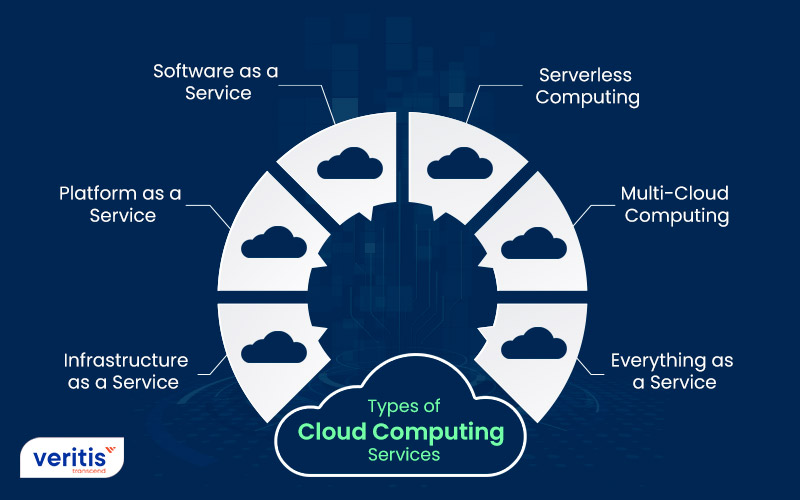Achieve Seamless Scalability With Cloud Services
In the ever-evolving landscape of cloud solutions, achieving smooth scalability stands as a cornerstone for modern services looking for to remain affordable and versatile. The quest for smooth scalability with cloud solutions reveals a globe of possibilities for those ready to accept the transformative power of vibrant resource management.
Benefits of Cloud Scalability
Cloud scalability provides companies the adaptability to dynamically readjust sources based on need, making certain optimum efficiency and expense efficiency. One key benefit is the ability to scale resources up or down rapidly in action to changing workloads. This dexterity enables companies to meet changing client needs without over-provisioning sources, inevitably causing cost savings. Scalability also boosts performance by making certain that systems can take care of raised web traffic or work without experiencing downtime or downturns. By effectively allocating sources, companies can keep high degrees of efficiency throughout peak times without unneeded expenditures during quieter periods. Furthermore, cloud scalability promotes technology and trial and error by enabling companies to easily test brand-new concepts and range them as needed. This flexibility encourages a society of constant improvement and adaptation, allowing organizations to remain affordable in a quickly developing market landscape. Ultimately, the advantages of cloud scalability extend beyond price savings to include improved efficiency, agility, and development.
Trick Features for Scaling
Reliable scaling in cloud solutions depends on essential attributes that enable organizations to adjust resources dynamically based on demand. One essential feature for scaling is flexibility, permitting resources to scale up or down in action to varying workloads. This guarantees that organizations can fulfill efficiency needs without over-provisioning resources. One more vital feature is scalability, making it possible for systems to take care of increased workload by adding sources flawlessly. This attribute is important for suiting development without jeopardizing efficiency. In addition, automation plays a vital role in scaling by automating the provisioning and de-provisioning of sources based on predefined policies. Automation lowers human treatment, boosts performance, and ensures rapid reaction to changing demands. Tracking and analytics tools are likewise crucial for scaling, giving insights right into source application, efficiency metrics, and prospective traffic jams. These tools allow organizations to maximize and make educated choices source appropriation for reliable scaling. On the whole, these vital attributes jointly encourage companies to achieve smooth scalability in cloud solutions.
Carrying Out Auto-Scaling Techniques
To effectively maximize source allotment and adjust to varying workloads, companies must strategically execute auto-scaling strategies in their cloud solutions infrastructure. Auto-scaling allows systems to automatically readjust the number of calculate resources based on real-time need. There are various auto-scaling approaches that companies can use, such as predictive scaling, which makes use of historical data to forecast future resource demands, and reactive scaling, which reacts to existing work changes.

Finest Practices for Scalability
For organizations aiming to improve their scalability in cloud solutions, executing best methods is important for optimal performance and source management. One trick finest practice is designing applications with a microservices architecture. This technique breaks down applications into smaller sized, independent solutions that can be deployed, upgraded, and scaled individually, permitting higher versatility and scalability.
An additional crucial practice is using containerization modern technology, such as Docker or Kubernetes. Containers allow the packaging of applications and their reliances right into isolated devices, making it much easier to scale parts independently and release them constantly across different settings.
Additionally, implementing automated implementation and infrastructure as code (IaC) can improve scalability initiatives (linkdaddy cloud services). Automation devices like Terraform or Ansible help in provisioning and taking care of resources effectively, lowering manual mistakes and making it possible for rapid scalability
Additionally, checking efficiency metrics, setting up alerts, and performing routine ability preparation are crucial practices to guarantee aggressive scalability administration. By sticking to these ideal practices, organizations can accomplish seamless scalability in their cloud solutions while optimizing performance and resource usage.
Surveillance Efficiency Metrics
When assessing the effectiveness of cloud services scalability, closely keeping track of performance metrics is vital for making sure optimal functionality and source appropriation. By constantly tracking crucial efficiency indicators (KPIs) such as response times, source, throughput, and latency usage, organizations can gain valuable understandings into the health and efficiency of their cloud framework. Checking performance metrics permits for the very early detection of possible bottlenecks or issues that can affect scalability, allowing proactive steps to be required to address them prior to they rise.
Verdict
Finally, accomplishing smooth scalability with cloud services is important for cloud services press release companies to enhance efficiency, enhance innovation, and keep high performance degrees during peak times. By leveraging the benefits of cloud scalability, executing auto-scaling approaches, making use of crucial features such as flexibility and automation, and complying with best methods like application layout and efficiency surveillance, services can effectively scale their systems while optimizing resource utilization and efficiency.
The quest for smooth scalability with cloud services reveals a world of possibilities for those ready to embrace the transformative power of vibrant source administration.
Cloud scalability provides companies the flexibility to dynamically change sources based on demand, guaranteeing ideal efficiency and cost effectiveness. An additional vital feature is scalability, making it possible for systems to deal with raised work by adding sources perfectly.For companies intending to enhance their scalability in cloud solutions, executing finest practices is vital for optimum performance and source monitoring.When evaluating the performance of cloud services scalability, very closely keeping an eye on efficiency metrics is necessary for ensuring optimum functionality and source allocation.
Comments on “Universal Cloud Service: Trusted and Reliable Solutions for Your Organization”